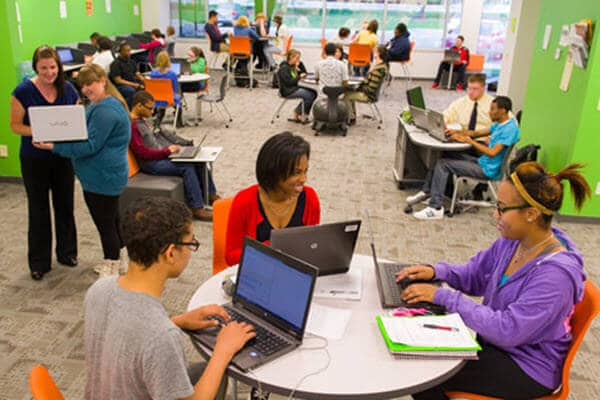Setting Healthy Screen Time Limits for Students Learning Online
by Julie Hersum
byConnections Academy
3 min to readWhen you think of a classroom, you probably think of the traditional setup: rectangular desks with a chair facing the teacher and a chalkboard.
But is that really how students learn best? New trends in digital learning show that the standard classroom setup is changing since students are proving to be more active learners. With many schools using blended learning by integrating virtual technology into their curriculums, classrooms are changing to meet modern needs.
Here are a few things K–12 online school students gain from a less structured learning setting:
In a study on active learning spaces, Steelcase found that a more informal learning environment endorses a less passive and more active student—one who participates in the discussion or lesson instead of simply absorbing. Steelcase breaks down the core of active learning into three categories:
The manner in which students are learning is evolving each day. According to research done by Educause on blended learning spaces, a large portion of learning takes place outside of a formal classroom. Here are a few trends in online learning that are affecting classrooms:
Many schools are changing their classroom layout to allow for more group work. Teachers are great supportive resources for students; however, learning often happens through peer-to-peer interaction as well. Group work can really help to stimulate the brain by challenging students to collaborate and support their peers, just as they may find themselves doing in college or the workplace. Sometimes students find that feedback from their peers helps them to understand certain concepts in a different or clearer way.
It’s a fact—advanced technology has become a significant tool in our everyday lives. Instead of opting for a piece of paper and pen, students want to take out their laptops because it’s a device that they have become comfortable with. Providing sufficient electrical outlets in classrooms allows the use of various digital means in a careful and appropriate manner that goes hand in hand with everyday lessons. Integrating technology in the classroom can serve as a valuable form of practice for research skills that will be needed in the future.
Trends in online learning are greatly affecting the traditional classroom design. How does the setup of your child’s learning space affect the way he or she learns?
